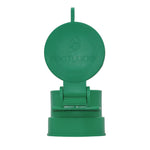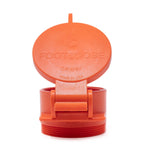You have no items in your shopping cart.
The installation of a monitoring well on your property can introduce plenty of benefits, including the assurance of quality drinking water. However, this decision requires some forethought and planning to ensure that your well is performing competently throughout its lifespan.
How do Monitoring Wells Differ from Water Wells?
A common misconception is that monitoring wells and water wells are the same. However, monitoring wells allow technicians to collect groundwater samples, measure water flow, and assess the health of the well without the need for direct access. Alternatively, water wells use pipes and pumps to pull water out of the ground for household, commercial, or industrial use.

How Are Monitoring Wells Used?
Monitoring wells, otherwise known as “observation wells,” are primarily used for measuring groundwater levels, flow, and quality. They allow technicians to collect groundwater samples and assess the health of the well without the need for direct access.
Groundwater quality is determined by collecting samples of water and sending them to a lab to be inspected for any harmful substances, biological samples, tracer studies, and measurements of water levels. Monitoring wells can also help to assess the aquifer – a water-bearing rock that transmits groundwater to the well – and provide insight into the populations of groundwater species that inhabit it.
Proper installation, regular maintenance, and the use of high-quality monitoring well equipment keep the aquifer safe from contaminants like runoff and pests. With the use of cameras and other high-tech equipment, municipalities and homeowners can save money by lessening the amount of resources needed for well maintenance.

How Are Monitoring Wells Installed?
There is no universal method for well installation, which means it is vital to determine the appropriate drilling method based on project objectives and on-site conditions. Since these types of wells are intentionally located in areas that could be affected by high levels of pollutants, improper installation or maintenance could become a severe threat to groundwater quality.
The following are some of the drilling methods used for monitoring well installation:
-
Hollow-Stem Augering
Hollow-stem augering involves attaching the spiral-shaped drill bit to a hollow stem rather than a solid one. The hollow stem serves as a temporary casing to prevent the sides of the borehole from falling in. This method allows for rapid, easy, and cost-effective drilling into clay and soft soils.
Continuous cores may be obtained by inserting a thin-walled tube into the lowest auger and locking it into place. Once the hole’s depth has surpassed the length of the auger, the tube should be retracted using a wireline to hoist it up.
-
Cable Tool Drilling
Cable tool drilling is a method in which the claw bit is attached to a weighted drilling string attached to a drill bit to be alternately lifted and dropped. The repeated lifting and dropping loosens the ground material, mixing with water to form a slurry. The slurry and small pieces of rock are then removed from the hole periodically with a bailer.
In softer soils, the wall of the borehole should be reinforced to prevent collapse by driving steel casing into the ground as the drilling advances. Once this is done, a well can be constructed inside the steel casing.
-
Rotary Drilling
Rotary drilling is a method that is used to drill deep observation holes or to obtain rock samples. For this method, a spade- or corkscrew-shaped rotating drill bit, otherwise called a rotary, is driven into the ground until a large diameter hole is formed. During the drilling process, casings are typically used to prevent the well hole from collapsing.
Two rotary drilling methods used in monitoring well installation include:
- Mud Rotary Method
The mud rotary method consists of the drill bit being attached to hollow drilling rods. The drill bit then begins to rotate rapidly to drive through the borehole. Drill cuttings are removed by pumping drilling fluid through the rods, up between the rods and the borehole. This fluid then flows into a mud pit and is pumped back through the rods to cool off and prevent the borehole from caving in. After construction, it may be necessary to undergo extensive remediation to ensure all the drilling fluid is removed.
- Air Rotary Method
Air is used as drilling fluid in the air rotary method by forcing the air down the drill rods by an air compressor. The air then escapes through the drill bit, returning to the surface between the hole wall and the drill string. Cuttings are removed by the ascending air to be collected around the drilling rig. During and after drilling, the surrounding air should be filtered to prevent contaminated substances from entering the borehole.
How Can a Monitoring Well Help You?
Installing a monitoring well may not seem like a simple task. But with the right tools and information, it can be done efficiently with a team of qualified professionals. Monitoring wells are especially important for rural homeowners, businesses, and communities that get their drinking water from wells, as they can help ensure the health and safety of you and your family.
Looking for more information on monitoring wells? Get started with our essential guide to the different types of monitoring well equipment.









